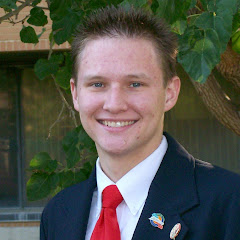Published Originally in the Utah Statesman on Mar. 26, 2008; Online at Utah Statesman.
By JP Parrish
Staff Writer
“Hello, IT Service Desk, how can I help you?” The image on a computer screen had accidentally been digitally rotated 90 degrees. This unsuspecting IT technician faced a naïve woman on the phone, who had physically turned her monitor on its side to fix the problem. There is a gap in computer literacy between our generation and that of our parents and grandparents.
Nathan Hills, sophomore in management information systems, and Brittany Furniss, junior in computer science, both work at the IT Service Desk in the Janet Quinney Lawson building, right next to the Veterinary Science building. Hills and Furniss both said working with people is generally a good experience. A few interesting situations arise occasionally, like the woman with the sideways monitor.
Furniss said younger students are usually more impatient, and the older age group are more understanding. She also said the older generation seem to expect problems to arise with technology, whether they cause it themselves or simply because of recurring computer errors.
“There are some people who come in every day for assistance,” said Steve Funk, speaking about the older generation that didn’t grow up with such advanced technology.
Funk is the IT Service Desk manager on campus. When the desk opened in 1995, Funk began with two student employees and himself taking phone calls and walk-ins. Now the program has expanded to meet demand. With 18 full-time employees and 25 student employees, the IT Service Desk offers technical support as well as a top-notch repair center, Funk said. It offers full hardware service and data recovery with technicians certified by Dell, Apple and Sony.
With growth in fields of technology, students and even professors may get lost in the torrent of new gadgets and functions.
Cathy Ferrand Bullock, assistant professor in the journalism and communication department, said she hasn’t done as much as other professors with technology. Part of it scares her a bit, and she said she is not convinced it always improves instruction in the classroom.
While in graduate school, Bullock worked with key punch cards to compute statistics on early computers. The current technology USU works with is all new to her, she said. Although she calls herself a technology laggard, Bullock has since learned and incorporated e-mail, printouts and PowerPoints into her teaching style.
It was back in the day of Windows® 3.1 and MS-DOS® that junior in speech communication, Joe Phippen, first began to use a computer. The Microsoft® Web site states Windows® 3.0 was released in 1990, and for Phippen, it was simple to use.
The most challenging computer function that Michael Tatton, senior in history, has faced is changing his USU password, he said. Tatton said any work in the campus labs have been no problem. He still needs to take the required CIL tests and said, “I’m not worried.”

No comments:
Post a Comment